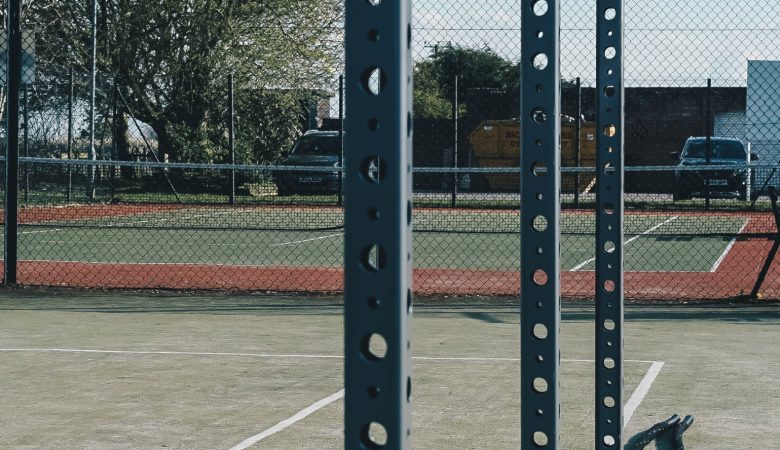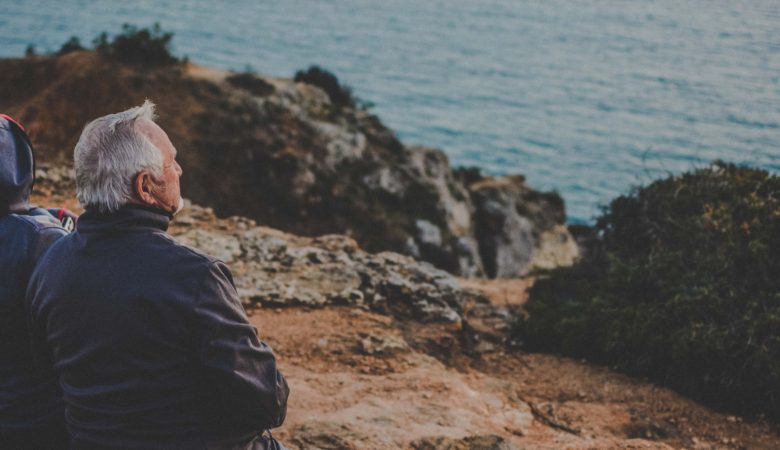4sight: Week 7 27/11/20
The lockdown restrictions placed on leisure venues during November 2020 are expected to cost over £29 million in terms of missed health-related social value savings.
As England prepares to exit the second lockdown and return to a tiered system, we look at the wider impact of closing leisure venues, both at a UK level and for England and the devolved countries. While the industry has been successful in ensuring leisure venues can open as part of this tiered system, the impact of closing facilities during lockdowns will take months if not years to reverse.
Using Lockdown 1.0 as a baseline
For context, projecting the potential impact of the current lockdown starts with a review of the effects of the first lockdown, focussing on mental and physical health. Results from a range of sources demonstrate the significant negative impacts on physical and mental health, with headline findings shown below:
- Self-reported mental health and wellbeing worsened during lockdown 1.0, with anxiety levels in adults being double the 2019 average, demonstrated by figures in the first 3 weeks of the national lockdown. Mental distress was 8.1% higher in April 2020 than the average between 2017 and 2019. Adults experiencing a level of psychological distress increased to 37.8% from an average of 24.3% between 2017 and 2019
- Reductions in mental health were most prevalent in the 18-34 age group and more significantly for women
- Almost one in five (19.2%) of adults were likely to experience some form of depression during June 2020. This was almost double the level before the pandemic (9.7% in July – March 2020)
- 54% of respondents said they were exercising less than usual in the Rethink Mental Illness Online Survey. Reasons for this included gyms and pools being closed, a fear of catching COVID-19 or low motivation due to medication or low mood induced by the crisis
- The Sport England Active Lives survey – Coronavirus Report states that during mid March to mid May 2019, 65.3% of adults reported being physically active (150 mins per week), compared with 58.2% in the same period this year during lockdown. In addition, an extra 3.2 million people being newly classed as “Inactive” (less than 30 minutes a week) compared with the same period last year.
- The reduction from a relatively high 10,000 steps/day (approximately the recommended level of physical activity) to less than 2,500 (Approximately the level of an inactive individual) in just a 14 day period can lead to such issues as:
- Metabolic Maladaptation’s proven to be associated with Obesity
- Increased intra-abdominal pressure – affecting lung capacity and circulation, with adverse effects on other vital organs
- Ectopic fat accumulation
- Hyperinsulinemia (higher amount of insulin in the blood) – often associated with Type 2 Diabetes
- Cardiorespiratory Fitness
- Muscle Atrophy in the lower extremities (weakening of leg and lower body muscles)
- Particularly in elderly individuals it can lead to detrimental alterations in glucose and insulin metabolism and losses in muscle mass alongside skeletal muscle mass.
The projected lockdown 2.0 effect
Projections without the impact of COVID 19 indicate that the social value generated from leisure venues in terms of community health savings, was to increase by 4.52% from November 2019 to £32.7million in November 2020.
However, with the national lockdowns forcing physical activity venues to close temporarily in November 2020, the social value savings that should have been generated have been severely restricted. Even sites that remain open in areas of the UK such as Scotland and Wales still suffer from a lack of consumer confidence with regards to returning to leisure venues after the initial lockdown end on the 25th July 2020.
The projections for Nov 2020 reflect the impact of COVID 19 on health savings, showing only a 9.95% return of the previous projected figures. This equates to a UK wide loss of £29.4million in health savings from leisure venues.

The below table shows a breakdown into specific health indicators, showing which forms of social value represent the greatest proportion of community savings.

For wider context, the below table highlights how the projected Social value for Nov 2020 without COVID is split between each nation in the UK. This is compared with the amount of social value expected to be generated in Nov 2020 with the impact the COVID.

For further information or to enquire about 4GLOBAL’s insight services, including COVID19 Business Recovery Modelling, please contact enquiries@4global.com.
Data sources and assumptions
England
- All leisure venues closed from 5th November for the remainder of the month.
- Outdoor leisure venues such as golf courses, tennis courts and basketball courts to close with public parks remaining open
- Rates of participation expected at remaining open venues aligned to the observed rate seen in the specific nation since lockdown restrictions were lifted
Northern Ireland
- All leisure venues closed from 27th November onwards
- Indoor sports which contain mixing of households banned, as per restriction from 16th October.
- Rates of participation expected aligned to the observed rate seen in the specific nation since lockdown restrictions were lifted and during the course of November to date.
- Outdoor leisure venues such as golf courses, tennis courts and basketball courts to close with public parks remaining open
Scotland
- All sites open until the 20th November as a minimum
- Rates of participation expected aligned to the observed rate seen in the specific nation since lockdown restrictions were lifted and during the course of November to date.
- The following areas to have leisure venues closed on the 20th November as per the Tier 4 restrictions set out by Scottish government. Representing approximately 2.3 million people.
- East Ayrshire
- East Dunbartonshire
- East Renfrewshire
- Glasgow
- North Lanarkshire
- Renfrewshire
- South Ayrshire
- South Lanarkshire
- Stirling
- Outdoor leisure venues such as golf courses, tennis courts and basketball courts to close with public parks remaining open
Wales
- Sites to reopen after the “Firebreak” lockdown on the 9th November in the same manner as seen on 25th July.
- Outdoor leisure venues such as golf courses, tennis courts and basketball courts to close with public parks remaining open
- Rates of participation expected aligned to the observed rate seen in the specific nation since lockdown restrictions were lifted and during the course of November to date.
Bibliography
Banks, J. and Xu, X., 2020. The mental health effects of the first two months of lockdown and social distancing during the Covid-19 pandemic in the UK (No. W20/16). IFS Working Papers.
Bowden Davies, K.A., Pickles, S., Sprung, V.S., Kemp, G.J., Alam, U., Moore, D.R., Tahrani, A.A. and Cuthbertson, D.J., 2019. Reduced physical activity in young and older adults: metabolic and musculoskeletal implications. Therapeutic advances in endocrinology and metabolism, 10, p.2042018819888824.
Daly, M., Sutin, A. and Robinson, E., 2020. Longitudinal changes in mental health and the COVID-19 pandemic: Evidence from the UK Household Longitudinal Study. Psychological Medicine, pp.1-37.
Falkingham, J., Evandrou, M., Qin, M. and Vlachantoni, A., 2020. Sleepless in Lockdown: unpacking differences in sleep loss during the coronavirus pandemic in the UK. medRxiv.
Füzéki, E., Groneberg, D.A. and Banzer, W., 2020. Physical activity during COVID-19 induced lockdown: recommendations. Journal of Occupational Medicine and Toxicology, 15(1), pp.1-5.
Guthold, R., Stevens, G.A., Riley, L.M. and Bull, F.C., 2018. Worldwide trends in insufficient physical activity from 2001 to 2016: a pooled analysis of 358 population-based surveys with 1· 9 million participants. The Lancet Global Health, 6(10), pp.e1077-e1086.
Oikawa, S.Y., Holloway, T.M. and Phillips, S.M., 2019. The impact of step reduction on muscle health in aging: protein and exercise as countermeasures. Frontiers in nutrition, 6, p.75.
ONS, 2020. Coronavirus and depression in adults, Great Britain – Office for National Statistics. [online] Ons.gov.uk. Available from: https://www.ons.gov.uk/peoplepopulationandcommunity/wellbeing/articles/coronavirusanddepressioninadultsgreatbritain/june2020 [Accessed 26 Nov. 2020].
Pierce, M., Hope, H., Ford, T., Hatch, S., Hotopf, M., John, A., Kontopantelis, E., Webb, R., Wessely, S., McManus, S. and Abel, K.M., 2020. Mental health before and during the COVID-19 pandemic: a longitudinal probability sample survey of the UK population. The Lancet Psychiatry, 7(10), pp.883-892.
Rethink Mental Illness, 2020. Rethink Mental Illness COVID-19 Briefings. Rethink.org. Available from: https://www.rethink.org/media/3813/physical-health-during-covid-19-outbreak.pdf
Sport England Active Lives Survey, October 2020. Active Lives Adult Survey – Mid -March to mid -May 2020 Coronavirus Report. [online] Sportengland.org. Available from: https://sportengland-production-files.s3.eu-west-2.amazonaws.com/s3fs-public/2020-10/Active%20Lives%20Adult%20May%2019-20%20Coronavirus%20Report.pdf?2L6TBVV5UvCGXb_VxZcWHcfFX0_wRal7 [Accessed 21 Nov. 2020].
Sport England Active Lives Survey, October 2020. Active Lives Adult Survey – May 2019/20 Report [online] Sportengland.org. Available from: https://sportengland-production-files.s3.eu-west-2.amazonaws.com/s3fs-public/2020-10/Active%20Lives%20Adult%20May%2019-20%20Report.pdf?AYzBswpBmlh9cNcH8TFctPI38v4Ok2JD [Accessed 21 Nov. 2020].
UK Government, 2020. Wider impacts of COVID-19 on health: summary, 12 November 2020. [online] GOV.UK. Available from: https://www.gov.uk/government/publications/wider-impacts-of-covid-19-on-health-monitoring-tool/wider-impacts-of-covid-19-on-health-summary [Accessed 12 Nov. 2020].
Following announcements that indoor gyms and leisure facilities could open on 25th July on 2020, it wasn’t long before the first ‘local restrictions’ were put in place.


